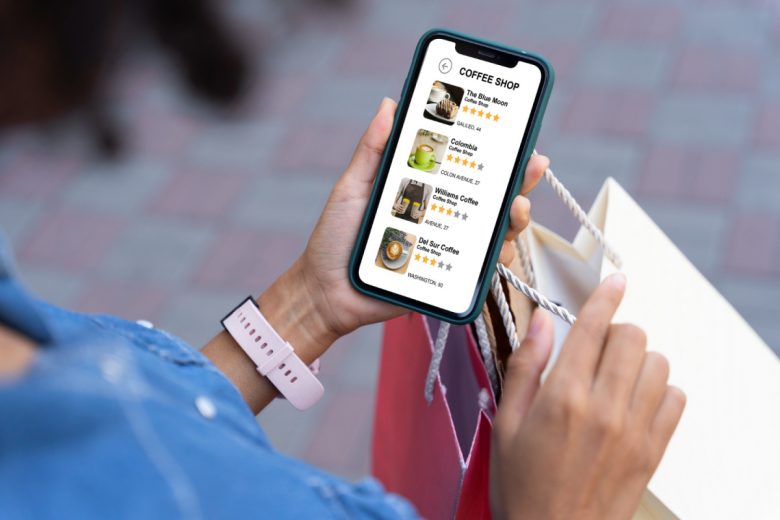To make the most of mobile marketing, it’s important to stay informed regarding the latest trends and newest opportunities. The modern world is intense and fast-paced, so keeping up with mobile marketing trends can get overwhelming fast.
To stay competitive with your marketing efforts and to reach your mobile marketing goals, it’s important to be aware of the many trends happening within the industry. Fortunately, here you’ll learn 8 mobile marketing trends and how to use them.
Voice User Interfaces (VUIs)
Voice User Interfaces (VUIs) are expected to be a significant trend in mobile marketing due to their enhanced user engagement, accessibility, and evolving consumer behavior. VUIs allow users to interact with their devices through voice commands, offering a hands-free, intuitive experience. This is particularly appealing in an era where multitasking has become the norm, and consumers seek efficient ways to access information and services.
The rise of smart speakers and voice-activated devices has already conditioned users to embrace voice commands. This trend is set to infiltrate mobile marketing, as brands can leverage VUIs to provide personalized experiences. For instance, voice searches are often more conversational and can yield insights into user intent and preferences, enabling marketers to tailor their content and recommendations more effectively.
Voice technology’s accessibility broadens market reach, including those with visual impairments or motor difficulties, thus creating a more inclusive digital environment. This inclusivity not only enhances brand reputation but also taps into a wider consumer base.
In addition, advancements in natural language processing and AI will make VUIs more sophisticated, capable of handling complex interactions and offering more accurate responses. As a result, mobile marketing strategies can become more interactive and engaging, fostering deeper connections between brands and consumers.
Mobile Commerce
You’ve likely heard of the term “e-commerce”, referring to the process of making purchases through the internet (usually a computer). However, another new term has emerged from this known as “m-commerce” which stands for mobile commerce. This term refers to customer transactions completed through the use of a mobile device.
Mobile commerce is becoming more and more popular every day. Previously, throughout economic history, different commodities have been the driving force behind most businesses’ success. The modern commodity? Convenience.
Not only is the modern world built around smartphones and technology, but our society leans into that as well. Today, 97% of Americans own a cellphone of some kind, and 85% of adults own a smartphone and use it regularly. Not only that but 56% of all online transactions are conducted via mobile shopping. The modern consumer is interested in having access to your storefront, customer service, and assistance right at their fingertips.
One great way to take advantage of the growing popularity of m-commerce is to establish a mobile-friendly website for your business. Customers expect convenient and immediate shopping opportunities on the go. Companies that fail to provide this will get left in the dust behind the competition.
Hyper-Personalization
For centuries, business owners have had various means of collecting customer data, whether it was a logbook filled with personal notes or a spreadsheet. Today, we have a different technique that allows companies to collect and analyze consumer data: algorithms. One example of using an algorithm to track customer preferences and behaviors involves the use of hyper-personalization.
Within your company’s target audience, there are smaller niches. Within these niches, customers can be categorized by different characteristics. For example, say you run a clothing company and your target audience is women aged 18-24. Within that audience, you have other subgroups. For example, plus-sized women, women who shop exclusively through clearance, and so forth. If you notice one customer lingering on certain pages, you can take note of that behavior and market to them similar products.
Through the implementation of hyper-personalization, you can target extremely specific groups of consumers with content tailored just for them. This works well for both the consumer and the company. The consumer can weed out ads and marketing that don’t interest them while the company doesn’t have to waste resources marketing to a disengaged audience.
Consumers who receive hyper-personalized marketing campaigns are more interested to pursue the company creating that content, thus generating leads for your business. Additionally, 98% of professional marketers agree that hyper-personalization improves customer relationships.
Hyper-personalization also allows your company to show that it takes notice of its consumers’ wants and needs. Using this technique demonstrates that your brand responds to its customers and is attentive to their demands, which can also improve your business’s reputation.
Augmented Reality (AR)
The use of AR technology is skyrocketing, particularly in corporate settings. Augmented reality is a form of tech that superimposes computer-generated images onto reality using mobile apps. One popular example of this technology is actually the famous mobile game “Pokemon Go”, in which app users are encouraged to walk around and “find” Pokemon, which are visible only on their phone screen.
You might be wondering how AR could work for you if you don’t run a gaming app or entertainment business. But, the truth is, AR can work for almost any business.
Another great example of AR used to facilitate commerce online includes mobile apps that allow consumers to “try on” a hairstyle or brand of makeup before making a purchase.
Even Amazon uses AR with its “View in Your Room” feature. You simply snap a photo of the area within your home where you intend to place the furniture. Then, Amazon renders that furniture into the photo so you can see what it would look like before committing to the sale.
AR provides customers with a new opportunity to “sample” products before they hit the Buy button. This creates an overall better customer experience. Everyone has at some point made a purchase they later regret. With the use of AR, your brand doesn’t have to worry about that nearly as much.
It also creates a feeling of security within the transaction. Customers can see exactly what they’re getting, establishing clear expectations on both sides of the transaction. There are so many ways to incorporate AR into your company’s mobile app or mobile-friendly website – it’s truly an incredible opportunity.
Streaming on Mobile
It should come as no surprise to learn that mobile streaming is rapidly growing more popular. Especially among the younger generations. Consider that mobile streaming doesn’t have to be limited to apps like Netflix or Twitch, but can also be utilized for commercial purposes. Streaming product demos, repair instructions, and other features of your product can increase online engagement.
Mobile Video Advertising
Similar to mobile streaming, mobile video advertising is another great way to get better engagement online. Apps like Youtube and TikTok have popularized video content more than ever before. As of 2022, 98% of 18-34-year-olds watch videos daily on their mobile phone. This number is significantly lower than the number of people watching videos on any other device.
In marketing, you can either wait for your audience to find you, or you can get out and find them. The latter tends to be much more successful and sustainable. Through the use of mobile video ads, you can reach your target consumers where their attention is already focused – on mobile videos. If you don’t know where to start, try setting up a TikTok ad campaign or an Instagram story to get your foot in the door.
Voice Search Optimization
One part of making mobile interaction easier for consumers means optimizing every facet of the process, including voice search. Many customers use voice search to find websites and products they’re looking for, and you don’t want your brand to fall into the shadows.
Chatbots and AI
Chatbots and AI have reshaped the way many companies handle customer exchanges. Some companies have implemented this technology better than others. As seen in frustrating bot conversations over the phone. However, when done right, this tech saves companies time and money with ease.
Instead of hiring dozens of people to wait around for customer phone calls, you can employ a chatbot to do so for you. The chatbot offers customers assistance while they’re active on your company’s webpage, and the customer types in responses. Using keywords, the chatbot identifies their concern and offers solutions. If the chatbot is unable to help, a representative may be needed – but most inquiries are settled quickly by the bot itself.
Automating parts of the purchase process makes things easier for the company and the consumer. The consumer can seamlessly navigate the transaction process with little to no difficulties. And, the company can limit the amount of spending put toward customer service resources. Actually, businesses that use customer service chatbots save about 30% in total customer support costs.
Chatbots and AI can also be used to receive feedback from customers after their shopping experience has concluded. A chatbot may ask a customer how they feel about a purchase, product, or even an ad campaign. From there, it can track and record that feedback for analysis later.
Visual Search
The term “visual search” may not ring a bell. But, you’re likely still familiar with the actual technology behind it. Visual search technology allows mobile users to take/find a photo of something and search the web for related images and products.
If a customer is looking for something that your business offers, they should be able to use a visual search to find your mobile website. This can facilitate the shopping process in a way that is convenient for the consumer.
Conclusion
The world of mobile marketing is huge. And, there are many types of mobile marketing strategies and technologies out there. Every day new technology comes out that allows us to push the limits of yesterday’s campaign. If you want your business to keep up with the modern world, it’s important to look at new ways you can implement these tools and resources. Doing so will draw new customers and keep them coming back.












Pingback: Believe In Your BUSINESS Skills But Never Stop Improving ·
Pingback: 8 Mobile Marketing Trends for 2023 – Entrepreneur – Start, Run and Grow Your Business
Pingback: 8 Mobile Marketing Trends for 2023 Krownjobs.com - krownjobs
Pingback: 8 Mobile Marketing Trends for 2023 | Entrepreneur Canada
Pingback: 8 Mobile Marketing Trends for 2023 - Ikaroa
Pingback: 8 Mobile Marketing Trends for 2023 – Andrea Zanon
Pingback: 8 Mobile Marketing Trends for 2023 – Austin Rotter
Pingback: 8 Mobile Marketing Trends for 2023 – Joseph Odierno Buffalo